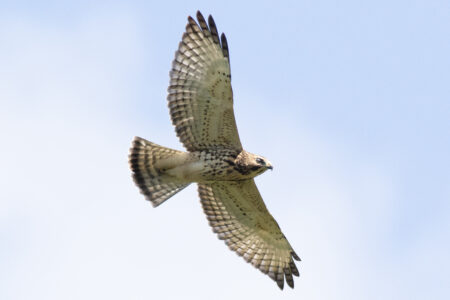Reflections in Nature: Opening acts for our autumn leaf show are the fall flowers
In the Troy area, the leaves have been changing for several weeks. However the leaves are not as colorful as usual and appear to be frizzled and beginning to fall off.
I am sure this is the result of the dry spell we have had. On Saturday, we traveled to the Williamsport area and noticed that the leaves were just beginning to change.
Hopefully the leaves will be in full color when the game commission conducts a tour of State Game Lands 12 in Bradford County on Sunday, Sept. 28 from 9 a.m. to 1 p.m. The 28-mile, self-guided, circular driving tour through State Game Lands 12 will take about two hours to complete.
Vehicles with good ground clearance are recommended.
State Game Lands 12 consists of nearly 24,480 acres. The route will start at the game lands parking lot on top of Wheelerville Mountain on state Route 154, just south of Canton. This tour will highlight habitat enhancements, infrastructure improvements and hunting opportunities. The tour goes by Sunfish Pond County Park, so a picnic lunch may be the order of the day.
Those taking the tour will find the local history of the mountain and the Game Commission’s refuge system intriguing. A pocket guide with historical information and photographs will be provided to each vehicle at the start of the tour. The tour ends at the intersection with state Route 154 in Wheelerville.
October’s colorful leaves will draw many tourists to the mountains, however, the opening acts for this leaf show are the fall flowers. Almost every day a different wildflower appears along the roadsides. August and September are the months when yarrow, tansy, goldenrod, monarda, evening primrose, mullein, Joe-Pye weed, Queen Ann’s lace, touch-me-nots, etc., make up the fall flower show.
At the same time these fall flowers were appearing, the spring flowers have set their seeds, and the plants are beginning to die back. Spring flowers are mostly small and delicate, while fall flowers are usually large, with heavy stalks.
The reason for the difference is that spring flowers have had only a short time to grow and fall flowers had all summer to grow.
Stars of the flower show are the asters and goldenrods. They provide food and habitat for many birds and small animals. Research done by the University of Delaware lists asters and goldenrods as the wildflowers that support the greatest number of species of butterflies and moths that feed on the flowers. The goldenrod flowers are the last banquet for the honeybees.
Although the aster flowers have not been as prolific as usual this year, the goldenrod plant is appearing abundantly in the fieldsl. Our common aster’s scientific name is “Aster novac-anglias,” belonging to the composite family. The common name of aster is Latin for star, referring to the flower’s star-like shape. According to a Greek legend the aster was created out of star dust when Virgo looked down from heaven and wept.
There are more than 75 species of asters in the United States. These species are hard to tell apart but all bloom from August through October when the first hard frost stops the blooming.
The king of the fall flower show is the goldenrod. Here, in the United States, we have 125 species of goldenrod, and in Pennsylvania, there are thirty-two native species, of which seven are on the endangered list.
Since the goldenrod and asters bloom when most pollen supplies are becoming scarce, the honeybees really work on the plants. These two plants are probably what enable the honeybees to put in their winter supply of food. Over 1,000 different species of beetles, flies, butterflies and moths feed on the goldenrod plant.
“An ugly old woman walking in the woods was tired and footsore. She asked the trees for a walking stick to help her, but all the trees refused her request. However, an old broken stick said to her, “I am old and ugly, but if I can help you, please use me.” As the old woman emerged from the woods, she turned into a lovely fairy, and turning to the stick, asked what it would like more than anything else in the world. Its answer was simply to be loved by children everywhere. Turning it into a lovely flower and sprinkling gold dust over it, the fairy declared that children all over the world would always love the goldenrod.” — Unknown author.
Thomas Alva Edison experimented with goldenrod plants to produce rubber, which the plant naturally contains. Edison created a fertilization and cultivation process to maximize the rubber content in each plant. His experiments produced a 12-foot plant that yielded as much as 12% rubber. The tires on the Model T given to him by his friend Henry Ford were made from goldenrod.
George Washington Carver was also deeply interested in the regenerative properties of soil and the potential for alternative crops, such as peanuts and soybeans, to produce plastics, paint, fuel and other products. Ford had long believed that the world would eventually need a substitute for gasoline and supported the production of ethanol as an alternative fuel.
By the time World War II began, Ford had made repeated journeys to Tuskegee to convince George Washington Carver to come to Dearborn and help him develop a synthetic rubber to help compensate for wartime rubber shortages. Carver arrived on July 19, 1942, to set up a laboratory in an old water works building in Dearborn.
He and Ford experimented with different crops, including sweet potatoes and dandelions, eventually devising a way to make the rubber substitute from goldenrod, which was considered a weed by some. Carver died in January of 1943, and Ford died in April of 1947, however, the relationship between their two institutions continued to flourish.
Bill Bower is a retired Pennsylvania Game Commission Wildlife Officer. Read his blog and listen to his podcasts on the outdoors at www.onemaningreen.com.

